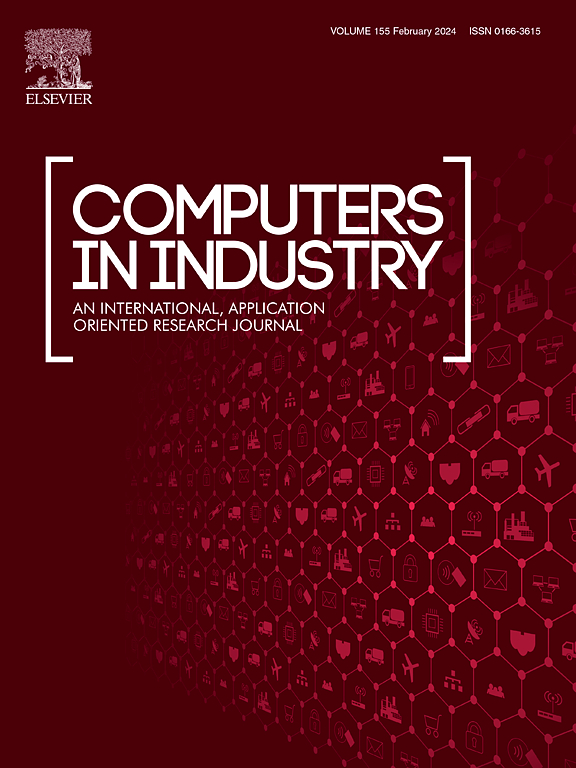面向认知数字孪生的可互操作工业知识表示和推理的检索增强生成
IF 8.2
1区 计算机科学
Q1 COMPUTER SCIENCE, INTERDISCIPLINARY APPLICATIONS
引用次数: 0
摘要
制造业中不断增长的数字数据量和复杂性凸显了对高效知识表示和推理解决方案的迫切需求。传统的方法通常依赖于本体、知识图或数字孪生(DTs)来表示知识,以及基于规则的推理算法,这些方法已经变得不够用了。生成式人工智能的出现,尤其是大型语言模型(LLM)和检索增强生成(RAG),提供了一种更高效、更智能的替代方案。然而,RAG系统的性能在很大程度上依赖于检索结果的质量,这可能会受到领域特定知识和检索干扰因素的影响。为了应对这一挑战,我们建议从两个方面加强为制造业量身定制的RAG系统。首先,我们利用资产管理外壳(AAS),它代表了德国工业对认知dt的看法,在标准化信息模型中创建资产和知识的表示。这为检索源建立了坚实的基础。其次,我们提出了一种对比选择损失(CSL)来微调开源LLM以优化检索结果。微调llm在任务和领域特定数据集上具有更高的效率和准确性,而CSL进一步增强了模型区分真实阳性和类似干扰物的能力。增强的RAG系统在机器人工作单元集成用例中进行了演示,并通过一种新的评估协议进行了评估。此外,RAG系统的检索有效性,特别是与CSL微调的LLM,通过统计实验得到了广泛的验证。结果证实了它优于最先进的方法,包括具有上下文学习提示和其他微调模型的GPT-4。本文章由计算机程序翻译,如有差异,请以英文原文为准。
Enhancing retrieval-augmented generation for interoperable industrial knowledge representation and inference toward cognitive digital twins
The escalating volume and complexity of digital data within the manufacturing sector highlight an urgent need for an efficient knowledge representation and inference solution. Traditional approaches, which often rely on ontologies, knowledge graphs, or digital twins (DTs) for knowledge representation, and rule-based algorithms for inference, are becoming insufficient. The emergence of generative AI, particularly large language models (LLM) and retrieval-augmented generation (RAG), offers a more efficient and intelligent alternative. However, the performance of an RAG system is heavily dependent on the quality of retrieval results, which can be compromised by domain-specific knowledge and retrieval distractors. To address this challenge, we propose to enhance RAG systems tailored for the manufacturing industry in two aspects. First, we utilize the Asset Administration Shell (AAS), which represents the German industrial perspective on cognitive DTs, to create a representation of assets and knowledge in standardized information models. This establishes a robust foundation for the retrieval sources. Second, we propose a contrastive selection loss (CSL) to fine-tune an open-source LLM to refine the retrieval results. Fine-tuned LLMs possess higher efficiency and accuracy on task- and domain-specific datasets, while the CSL further enhances the model's ability to distinguish true positives from similar distractors. The enhanced RAG system is demonstrated in a robotic work cell integration use case and evaluated through a novel evaluation protocol. Additionally, the retrieval effectiveness of the RAG system, specifically the LLM fine-tuned with CSL, is extensively validated through statistical experiments. The results confirm its superior performance over state-of-the-art methods, including GPT-4 with in-context learning prompts and other fine-tuned models.
求助全文
通过发布文献求助,成功后即可免费获取论文全文。
去求助
来源期刊

Computers in Industry
工程技术-计算机:跨学科应用
CiteScore
18.90
自引率
8.00%
发文量
152
审稿时长
22 days
期刊介绍:
The objective of Computers in Industry is to present original, high-quality, application-oriented research papers that:
• Illuminate emerging trends and possibilities in the utilization of Information and Communication Technology in industry;
• Establish connections or integrations across various technology domains within the expansive realm of computer applications for industry;
• Foster connections or integrations across diverse application areas of ICT in industry.
 求助内容:
求助内容: 应助结果提醒方式:
应助结果提醒方式:


